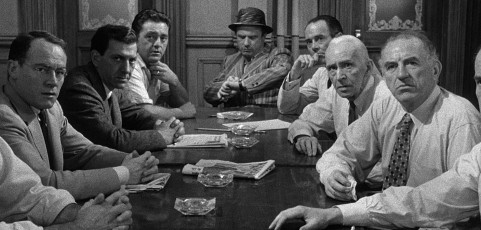Time is a sort of river of passing events, and strong is its current; no sooner is a thing brought to sight than it is swept by and another takes its place, and this too will be swept away. Marcus Aurelius said that. Time pressure rules at the best of times and dominates at the worst. If you’re in a rush, if your day is a blur of half-completed projects and harassed, unfocused meetings, scrawled to-do lists and endless notifications, you can miss things. You can make mistakes and damage relationships. It can raise issues of lack of trust, it can make employees feel unappreciated, or make bosses think you can’t handle the pressure. It can take a great deal of time to build up trust and credibility. Yet it can be lost in seconds. And the very worst thing you can do is the very thing you might feel tempted to do – to make promises you can’t keep. Before you know it, you’re in a negative cycle of missed deadlines and damaged relationships. The Positive Power and Influence Programme is focused on helping delegates meet objectives and at the same time maintain or build productive working relationships. This is known as the ‘balance beam’ model, and it sits at the heart of the programme. Balancing objectives and relationships requires influence. And effective influence often takes time and planning – especially if emotions are running high. So here are some quick-fix ideas to help you manage and influence both your tasks and relationships when time is short. 1. Picture your impact. If you’re so busy that you only have the time for one tip today, let it be this: always try to picture your impact. How people react to you is impossible to predict, but finding time to consider how your words and actions appear to others is a vital tool for self development. 2. Keep your promise. As Carl Gustav Jung said: ‘You are what you do, not what you say you’ll do.’ If you agreed to deliver a task at a certain time, move mountains to keep your promise. If despite all efforts you’re going to miss the deadline, communicate this fact as soon as possible. They need to know that it’s not going to happen. Taking the time to be up front and let them know will engender good will – and hopefully win you more time. 3. Make brief proposals. Keep it clear, keep it short. If you have an idea, don’t water it down with twenty back-up arguments. Just state the idea, with the two strongest arguments for doing it. 4. If you’re in a rush don’t force the issue. When you’re short of time,...
When the joke wears thin: tackling negativity with positivity
Negativity can have a destructive impact especially on a small team. It can be derailing, demotivating, and if you’re not careful you may find you’re being sucked down by the prevailing mood. And so often it starts out as a joke. We’re exploring the line between barbed banter and unprofessional negativity, between a comic scepticism and a wearing cynicism, between questioning and whinging. We’re using an anonymous case study from one of our delegates. And we’d love to know if any of this sounds familiar to you. Delegate A, who attended our 5-day programme in June 2013, was working in a large department of about sixty employees. Most days Delegate A worked with a seven-strong team. The team was overseen by an Old Hand of vast experience, who had seen everything, worked under every type of boss, and who, while inspired and inspirational at times, frequently gave off the impression that she was marking out time until retirement. The rest of her team was made up of a fresh-faced graduate, a second long-service campaigner, a pair of work-experience experiments that had turned into long-term employment, an itchy-footed travel enthusiast, and finally the person who ultimately inspired this article. We’ll call her B. B was witty and lugubrious, sometimes rude, and equally quick to guffaw at herself as at others. She could at times poke fun at everyone and everything. However, as her employment went on, according to Delegate A at least, she became more entrenched in her role and the focus of her barbs were turning inward – on the project at hand, on the wider organisation, etc. The word insidious comes to mind. What started out as a gentle mocking tone became more acerbic. What was occasional became a constant background buzz. The once humourous levity had been replaced by pessimism and negativity – comic negativity, yes, but negativity nonetheless. By now almost any project was being met with degrees of scorn or indignation. Someone who at first would leap at a chance to go the extra mile, was turning into a jobsworth. And any trouble ahead, was no longer treated as a slight roadblock, but a huge predicament, impossible to overcome. It was around now that Delegate A began to exhibit what the Positive Power & Influence Programme would call Avoiding behaviours. In professional situations A began to steer clear of B, preferring to deal with her more-likely-to-be-positive colleagues. But by now the negativity was spreading to the rest of the team. Everything was a problem rather than an opportunity. No one wanted to try anything new or different, preferring to do things how they had always done them . . . only then to complain of...
Influence at the Movies 3: The Courtroom
Arguably the greatest courtroom drama of all doesn’t take place in a courtroom, but in the juror’s room. Reginald Rose’s Twelve Angry Men was originally written as a teleplay for CBS and first broadcast in 1954. It follows the deliberations of a trial jury, as one dissenting juror seeks to convince the others that there is some reasonable doubt in what seems an open and shut murder case. The big screen version, directed by Sidney Lumet, appeared in 1957. By this time, all the characters had been given more detail and depth. Joseph Sweeney and George Voskovec reprise their roles as jurors #9 and #11 respectively, while Henry Fonda’s Juror #8 is noticeably more confident than the original portrayal by Robert Cummings. But I digress. The film is like an influence manual, with every character employing a wide range of ‘push’ and ‘pull’ styles to put forward his point, to listen to arguments, to win over allies, to undermine enemies or simply to manage or avoid conflict. Just like any critical situation, each character brings his own agenda and influence style to the table. Each has his own priorities, his own blocks and emotional baggage, which at times spill over into prejudice and racism, aggression, snobbery or simple laziness. The latter is perhaps best illustrated by Jack Warden’s character, whose priority is not justice, but that a decision is made quickly so he can get to the ballgame on time. The point is that if you’re interested in the ways we seek to influence each other, courtroom dramas can offer a petri dish of behaviour. There’s bombastic rhetoric, impassioned pleading, imploring, proposing and persuading, logic and reason, asserting to defendant, witness, judge and jury. There’s push and pull influence aimed upwards, downwards and sideways – from the judge, who wields all the positional power, to the defendant, who has none. And thanks to the rigid structure of court, every player gets their moment in the spotlight. So, with all that in mind, we’ve picked some of our favourite examples of courtroom influence as portrayed on screen. And happily there’s some 12 Angry Men in there too. Style: Persuading Behaviour: Reasoning Clip: The Fountainhead Gary Cooper gives voice to Ayn Rand’s most unshakeable character, architect Howard Roark. The short version: ‘Yes I blew up the building. But it was mine.’ Excerpt: ‘Man cannot survive except through his mind. He comes on earth unarmed. His brain is his only weapon. But the mind is an attribute of the individual, there is no such thing as a collective brain. The man who thinks must think and act on his own. The reasoning mind cannot work under any form of compulsion. It cannot not be...
How knowing your ‘type’ can unlock your potential
A personality indicator can be a hugely valuable developmental tool. It can help you reach a deeper understanding of your behaviours and can represent the key to help you tackle problems and barriers at work. We have recently combined the Myers-Briggs Type Indicator (MBTI) into our work with delegates on the Positive Power & Influence Programme – with very positive results. MBTI is something many of you may have come across during the course of your personal development. And in short we’re using it to investigate how personality type, as defined by this test, can help or hinder your ability to influence upwards. We’ve found that greater self awareness can help tackle some of the behavioural barriers that stand in our way. To explain a little more we’re going to follow the journey of two of our PPI practitioners – Nicola Lincoln and Deborah Fleming. But first a little background. MBTI was established in the 1940s and traces its lineage back to theories proposed by Carl Jung in the 1920s. Jung theorized that there are four principal psychological functions by which we experience the world: Sensing, Intuition, Thinking and Feeling. The MBTI questionnaire is designed to measure psychological preferences in how people perceive the world and make decisions. This chart has descriptions of each Myers-Briggs personality type and the four dichotomies central to the theory. So anyway, back to our experiment. Influencing upwards is something we all have to do. Whether you’re dealing with external clients, putting yourself forward for a new project, or simply setting the agenda for a discussion, you will need to influence. Many of you will have worked with Nicola Lincoln, our accrediting facilitator of vast experience, who has been collaborating with fellow Positive Power & Influence facilitator Deborah Fleming (who recently presented her experience of combining PPI and MBTI at the British Association for Psychological Type Conference in London). Nicola and Deborah are very different people and both have blocks that they have had to address and overcome in order to achieve their goals. Nicola, according to MBTI, is an ISTJ (Introversion, Sensing, Thinking, Judging) type. In the words of the MBTI workbook this means that she is ‘Responsible, sincere, analytical, reserved, realistic, systematic. Hardworking and trustworthy with sound practical judgement’. “Being ISTJ means I like to be exact,” she says. “I like to use my logic to come to conclusions. It can also mean I tend to be critical. And I do tend to let people know when they have not met my expectations . . . I notice faults and am quick to point them out. “Plus I can be more present- and past-focused. Other people can be more focused on the future – what can be achieved. I like...
Are you a forcer or an avoider?
When things aren’t going your way do you resort to negative influence? Do you force or avoid? Any person who works in an organisation has two basic needs: * Meet personal objectives * Maintain or build productive working relationships This is known as the ‘balance beam’ model, and it sits at the heart of the Positive Power & Influence Programme. The model is about finding a balance – finding a way to hit your business targets while maintaining and strengthening relationships. While the idea is simple, the reality is anything but. The key word here is ‘Positive’. No matter the situation, influencing in a positive way can help maintain this elusive balance. But everyone at one time or another will lose sight of the ball and resort to negative influence – or rather fall into the trap of negative influence. Half the time, we don’t even realise we’re doing it. If asked, we’d probably just say we’re just doing what we need to do to get the job done, or argue that ‘this is how I work’. The two categories of negative influence, as defined on the Positive Power & Influence Programme, are forcing and avoiding. Avoiding a situation that causes you stress or anxiety may in the short term alleviate the symptoms of stress, but over time it will damage your standing amongst colleagues and ultimately lead to you missing your objectives. A common workplace phobia is a fear of public speaking – and many of us (including the author of this article) will sometimes go to outrageous lengths to avoid speaking before an amassed audience. A more everyday example of an avoiding behaviour is sending an email when you could easily (and more efficiently) pick up the phone. And a more Machiavellian variant might be leaving a phone message when you know someone is in a meeting and will have their phone switched off. So much for avoiding. What about forcing? Perhaps a major deadline is looming and the stress is causing you to lose patience with colleagues you don’t feel are shouldering their fair share of the burden. This is when you may resort to forcing – sacrificing the relationship by attempting to force your will on a situation. Perhaps if you hold positional power – if you’re the boss of the individual, or in charge of the project in question – you might just flash the badge. Take the ’just-do-it-cos-I-say-so’ approach. This may work, and indeed there may be times when this approach is appropriate. But if you rely on positional power too heavily, you may find it increasingly hard to influence others in high-stress situations when you don’t hold that power. So forcing may work. But even...
Influence: The Sequel
During the Positive Power & Influence Programme delegates practise their influence skills using behaviours that may feel unfamiliar. The core styles are persuading, asserting, bridging and attracting, and during the pre-programme assignment and the live programme itself, delegates analyse which styles they might overuse, and which they tend to avoid using altogether. This is important as an over reliance on a single style can, in the long term, lead individuals to damage working relationships or miss business targets. The ultimate goal of the Positive Power & Influence Programme is for our delegates to achieve influence-style flexibility – to learn how to alter their approach to suit the situation, in order to maintain and strengthen relationships while also achieving their goals. Last year we compiled a series of film scenes as examples of influence styles and behaviours. Today we introduce our second batch of classic clips showing influence in action . . . but with varying degrees of success. Style: Asserting Behaviour: Negative Evaluation / Pressure Clip: Barefoot in the Park Jane Fonda exerts pressure on her new husband. Excerpt: ‘Was that a kiss? ‘Cos boy if that’s what kisses are going to be like from now on don’t bother to come back at five thirty.’ Style: Asserting Behaviour: Stating Expectations Clip: Apollo 13 Ed Harris states expectations to the ground crew. Excerpt: ‘Well, we’re gonna have to figure it out. I want people in our simulators working re-entry scenarios. I want you guys to find every engineer who designed every switch, every circuit, every transistor and every light bulb that’s up there. Then I want you to talk to the guy in the assembly line who had actually built the thing. Find out how to squeeze every amp out of both of these goddamn machines. I want this mark all the way back to Earth with time to spare.’ Style: Attracting Behaviours: Finding Common Ground Clip: The Magnificent Seven Eli Wallach attempts to attract Yul Brynner to his way of thinking. Excerpt: ‘I leave it to you. Can men of our profession worry about things like that? May even be sacrilegious. If God didn’t want them sheered he would not have made them sheep.’ Style: Bridging / Attracting Behaviour: Disclosing / Finding Common Ground Clip: Pride & Prejudice Colin Firth’s disclosure partially disarms Jennifer Ehle. Excerpt: ‘I have not that talent which some possess of conversing easily with strangers.’ ‘Well I do not play this instrument so well as I should wish to, but I have always supposed that to be my own fault because I would not take the trouble of practising.’ ‘You are perfectly right. You’ve employed your time much better. No one admitted to the privilege of hearing you could think anything wanting. We...








